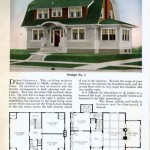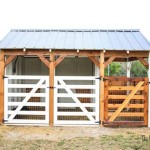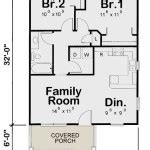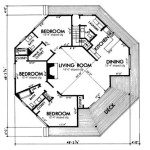Modern house design plans are blueprints or schematics that outline the layout, structure, and aesthetics of contemporary residential dwellings. These plans incorporate principles of modern architecture, characterized by clean lines, geometric shapes, open layouts, and the integration of natural elements such as light and ventilation. For instance, a modern house design plan might feature a minimalist exterior with large windows and an open floor plan that connects the living room, dining room, and kitchen.
Modern house design plans go beyond mere aesthetics, as they prioritize functionality and livability. They often include energy-efficient features, such as high-performance insulation and solar panels, to reduce the carbon footprint of the home. Additionally, modern house designs consider the needs of contemporary lifestyles, offering features like smart home technology integration, flexible spaces that can adapt to changing needs, and outdoor living areas that extend the living space to the outdoors.
In the following sections, we will delve into the key elements of modern house design plans, exploring the architectural principles, materials, and technologies that shape these cutting-edge residential designs. We will also discuss the benefits and considerations associated with choosing a modern house design plan, providing insights to help you navigate the process of designing and building a contemporary dream home.
Modern house design plans are characterized by the following key points:
- Clean lines
- Geometric shapes
- Open layouts
- Integration of natural elements
- Energy efficiency
- Smart home technology integration
- Flexible spaces
- Outdoor living areas
- Functionality
- Livability
These elements combine to create contemporary residential designs that are both aesthetically pleasing and practical.
Clean lines
Clean lines are a hallmark of modern house design plans. This refers to the use of straight lines and simple geometric shapes throughout the design of the home, both in the exterior and interior. Clean lines create a sense of order and clarity, and they help to visually streamline the home.
In the exterior of the home, clean lines can be seen in the sharp angles of the roof, the straight lines of the windows and doors, and the simple, geometric shapes of the overall design. In the interior of the home, clean lines can be seen in the layout of the rooms, the design of the furniture, and the overall aesthetic of the space.
There are several benefits to using clean lines in modern house design plans. First, clean lines can help to create a more spacious and open feeling in the home. Second, clean lines can help to reduce visual clutter and create a more calming and serene environment. Third, clean lines can help to make the home more energy-efficient, as they reduce the number of nooks and crannies where heat or cool air can escape.
Overall, clean lines are an essential element of modern house design plans. They create a sense of order, clarity, and spaciousness, and they can help to make the home more energy-efficient. If you are looking for a modern house design plan, be sure to look for one that incorporates clean lines throughout the design.
Geometric shapes
Geometric shapes are another essential element of modern house design plans. This refers to the use of shapes such as squares, rectangles, triangles, and circles throughout the design of the home, both in the exterior and interior. Geometric shapes can be used to create a variety of different effects, from creating a sense of order and symmetry to adding visual interest and dynamism.
In the exterior of the home, geometric shapes can be seen in the overall shape of the house, the shape of the windows and doors, and the use of geometric patterns in the landscaping. In the interior of the home, geometric shapes can be seen in the layout of the rooms, the design of the furniture, and the overall aesthetic of the space.
There are several benefits to using geometric shapes in modern house design plans. First, geometric shapes can help to create a more visually appealing and interesting home. Second, geometric shapes can help to create a more functional and efficient home, as they can be used to maximize space and create a more efficient flow of traffic. Third, geometric shapes can help to make the home more energy-efficient, as they can be used to create more compact and airtight designs.
Overall, geometric shapes are an essential element of modern house design plans. They can be used to create a variety of different effects, from creating a sense of order and symmetry to adding visual interest and dynamism. If you are looking for a modern house design plan, be sure to look for one that incorporates geometric shapes throughout the design.
Here are some specific examples of how geometric shapes are used in modern house design plans:
- A rectangular house with a triangular roof
- A house with a circular living room
- A house with a square kitchen
- A house with hexagonal windows
- A house with a geometric pattern in the landscaping
These are just a few examples of how geometric shapes can be used in modern house design plans. The possibilities are endless, and it is up to the architect to use their creativity to come up with unique and innovative designs that meet the needs of their clients.
Open layouts
Open layouts are a defining feature of modern house design plans. Open layouts refer to the elimination of traditional walls and partitions between different rooms, creating a more fluid and spacious living space. This design approach promotes a sense of openness and encourages a more communal and interactive lifestyle.
- Enhanced Natural Lighting and Ventilation: Open layouts allow for increased natural light to penetrate deeper into the home, reducing the reliance on artificial lighting. The free flow of air throughout the open spaces promotes natural ventilation, creating a healthier and more comfortable living environment.
- Improved Social Interaction: By eliminating physical barriers between rooms, open layouts foster greater social interaction and communication among family members and guests. The continuous flow of space encourages a more communal living experience, where activities and conversations can seamlessly transition between different areas.
- Increased Flexibility and Adaptability: Open layouts provide greater flexibility in and furniture arrangement. The absence of fixed walls allows homeowners to customize their living spaces to suit their changing needs and preferences. Open layouts can easily accommodate different furniture configurations, allowing for versatility and adaptability over time.
- Enhanced sense of Spaciousness: Open layouts create a more spacious and airy feel, even in smaller homes. The removal of walls and partitions visually expands the space, making rooms appear larger and more inviting.
Incorporating open layouts into modern house design plans offers a range of functional and aesthetic benefits. Open layouts promote a more connected and interactive living experience, improve natural lighting and ventilation, increase flexibility and adaptability, and enhance the overall sense of spaciousness within the home.
Integration of natural elements
Modern house design plans prioritize the integration of natural elements to enhance the overall well-being and connection to the outdoors. This integration manifests in various aspects of the home’s design, including:
1. Natural Lighting
Modern house designs are planned to maximize natural light intake, creating brighter and more inviting living spaces. Large windows, skylights, and glass doors strategically positioned throughout the home allow ample sunlight to flood the interior. This natural light not only reduces the reliance on artificial lighting but also contributes to the occupants’ overall mood and circadian rhythm regulation.
2. Ventilation and Airflow
Natural ventilation is a key consideration in modern house design. Open floor plans and cross-ventilation strategies promote the flow of fresh air throughout the home, reducing the need for mechanical ventilation systems. Windows and doors placed on opposite sides of the house facilitate cross-breezes, creating a comfortable and healthy indoor environment.
3. Natural Materials
Modern house designs often incorporate natural materials such as wood, stone, and brick to establish a connection to the outdoors and create a warm and inviting atmosphere. These materials bring a sense of organic beauty and texture to the home, adding visual interest and tactile appeal.
4. Outdoor Living Spaces
Modern house designs seamlessly blend indoor and outdoor living spaces, extending the home’s functionality and providing a sanctuary for relaxation and entertainment. Patios, decks, and balconies offer opportunities to enjoy the outdoors while remaining connected to the home’s interior. These outdoor spaces often feature comfortable seating, outdoor kitchens, and fireplaces, creating an inviting and functional extension of the living area.
The integration of natural elements in modern house design plans goes beyond aesthetics. It fosters a healthier and more sustainable living environment, reduces energy consumption, and enhances the overall well-being of the occupants. By embracing natural light, ventilation, materials, and outdoor living spaces, modern house designs create homes that are not just beautiful but also healthy, comfortable, and connected to nature.
Energy efficiency
Modern house design plans prioritize energy efficiency to reduce environmental impact and lower operating costs. This is achieved through the incorporation of various strategies and technologies that minimize energy consumption and promote sustainable living:
- High-Performance Insulation and Windows:
Modern house designs employ high-performance insulation in walls, ceilings, and floors to minimize heat loss in colder climates and heat gain in warmer climates. Advanced window systems with double or triple glazing and low-emissivity coatings further enhance thermal performance, reducing energy consumption for heating and cooling. - Energy-Efficient Appliances and Lighting:
Modern house designs encourage the use of energy-efficient appliances and lighting systems. Energy Star-rated appliances consume less energy and reduce utility bills. LED lighting is highly efficient and long-lasting compared to traditional lighting, further contributing to energy savings. - Renewable Energy Sources:
Incorporating renewable energy sources such as solar panels and geothermal systems allows modern homes to generate their own clean energy. Solar panels convert sunlight into electricity, reducing reliance on the grid and potentially eliminating energy bills. Geothermal systems harness the earth’s constant temperature to provide heating and cooling, significantly reducing energy consumption. - Smart Home Technology:
Smart home technology can enhance energy efficiency by automating systems and devices. Smart thermostats learn occupants’ temperature preferences and adjust heating and cooling accordingly, saving energy. Smart lighting systems allow for remote control and scheduling, reducing energy waste from lights left on unnecessarily.
By incorporating energy-efficient strategies and technologies, modern house design plans create homes that are not only comfortable and stylish but also environmentally responsible and cost-effective to operate. These sustainable features contribute to a greener future and a more comfortable living environment.
Smart home technology integration
Smart home technology integration is a defining feature of modern house design plans, allowing homeowners to control and automate various aspects of their homes through a centralized system or mobile app.
Smart home technology offers a range of benefits, including:
- Convenience and Comfort: Smart home systems provide convenient control over lighting, temperature, security, and entertainment systems through voice commands or smartphone apps. This allows homeowners to adjust settings remotely or create automated routines, enhancing comfort and ease of living.
- Energy Efficiency: Smart thermostats and lighting systems can learn occupants’ preferences and adjust settings accordingly, reducing energy consumption and lowering utility bills. Smart home systems can also monitor energy usage and provide insights to help homeowners identify areas for improvement.
- Enhanced Security: Smart security systems offer remote monitoring and control of door locks, security cameras, and motion sensors. Homeowners can receive alerts and access live footage from anywhere, providing peace of mind and deterring potential intruders.
- Increased Accessibility: Smart home technology can enhance accessibility for individuals with disabilities or mobility issues. Voice-controlled systems allow for hands-free control, while smart home devices can be programmed to assist with daily tasks, such as turning on lights or adjusting the thermostat.
The integration of smart home technology in modern house design plans is not just a trend but a reflection of the evolving needs and preferences of homeowners. By embracing smart home systems, modern homes offer a more convenient, comfortable, energy-efficient, and secure living experience.
Flexible spaces
Modern house design plans prioritize flexible spaces that can adapt to changing needs and lifestyles. These spaces are designed to be multi-functional and easily reconfigured, allowing homeowners to customize their living environment as desired.
Flexible spaces can take various forms, including:
- Open Floor Plans: Open floor plans eliminate traditional walls and partitions, creating large, open spaces that can be divided and arranged according to specific needs. This allows for greater flexibility in furniture placement and room layout, enabling homeowners to create distinct living zones within a single open area.
- Convertible Rooms: Convertible rooms are designed to serve multiple purposes, often through the use of movable walls, partitions, or built-in furniture. A guest room, for example, can be converted into a home office or a playroom when not in use.
- Multi-Use Spaces: Multi-use spaces are designed to accommodate a variety of activities within a single area. A kitchen island, for instance, can serve as a cooking surface, a dining table, and a breakfast bar, maximizing space utilization and functionality.
- Expandable Spaces: Expandable spaces can be enlarged or reduced in size as needed. A sliding wall, for example, can open up a small room to create a larger living area or close it off to create a more private space.
The incorporation of flexible spaces in modern house design plans provides homeowners with the freedom to adapt their living environment to their evolving needs and preferences. These spaces allow for greater creativity and personalization, enabling homeowners to create homes that truly reflect their lifestyle and aspirations.
Outdoor living areas
Modern house design plans seamlessly integrate indoor and outdoor living spaces, extending the home’s functionality and providing a sanctuary for relaxation and entertainment. Outdoor living areas are carefully planned and designed to create inviting and comfortable spaces that enhance the overall living experience.
Patios and Decks: Patios and decks are popular outdoor living spaces that extend the living area outdoors. Patios are typically constructed on a solid surface, such as concrete or pavers, and can be covered or uncovered. Decks, on the other hand, are elevated platforms made of wood or composite materials and are often attached to the house. Both patios and decks provide a perfect setting for outdoor dining, entertaining, or simply relaxing in the fresh air.
Balconies and Terraces: Balconies and terraces offer outdoor living spaces that are elevated above the ground level. Balconies are typically smaller and attached to the upper floors of the house, providing a private outdoor space for bedrooms or living rooms. Terraces are larger, often extending the entire length of the house, and can be used for a variety of activities, such as sunbathing, gardening, or hosting gatherings.
Pergolas and Gazebos: Pergolas and gazebos are structures that provide shade and shelter from the elements, creating comfortable outdoor living areas. Pergolas are open structures with a latticework roof that allows sunlight to filter through, while gazebos are enclosed structures with a solid roof and often screened sides. Both pergolas and gazebos can be furnished with comfortable seating and dining areas, creating an inviting outdoor retreat.
Outdoor living areas are an essential part of modern house design plans, offering homeowners the opportunity to enjoy the outdoors while remaining connected to the comfort and convenience of their homes. These spaces enhance the overall living experience, providing additional space for relaxation, entertainment, and connection with nature.
Functionality
Functionality is a core principle of modern house design plans, prioritizing spaces that are not only aesthetically pleasing but also practical and efficient for everyday living. Modern house designs incorporate various elements to enhance functionality, including:
- Open floor plans: Open floor plans eliminate traditional walls and partitions, creating large, open spaces that allow for seamless flow between different areas of the home. This design approach promotes a sense of spaciousness, facilitates natural light penetration, and encourages family interaction and social gatherings.
- Multi-purpose spaces: Modern house designs often incorporate multi-purpose spaces that can adapt to changing needs and lifestyles. These spaces can serve multiple functions, such as a guest room that doubles as a home office or a dining area that can be transformed into a playroom for children.
- Built-in storage: Modern house designs prioritize built-in storage solutions to maximize space utilization and maintain a clutter-free environment. These storage solutions can include closets, cabinets, shelves, and drawers that are seamlessly integrated into the design of the home, providing ample storage without compromising on aesthetics.
- Smart home technology: Smart home technology integration enhances functionality by automating various tasks and systems within the home. Smart devices, such as smart thermostats, lighting systems, and security systems, can be controlled remotely or through voice commands, providing convenience, energy efficiency, and peace of mind.
The focus on functionality in modern house design plans extends beyond individual spaces to the overall layout and flow of the home. Architects carefully consider the placement of rooms, the size and shape of spaces, and the connections between different areas to create a cohesive and functional living environment. By prioritizing functionality, modern house designs create homes that are not just beautiful but also comfortable, practical, and tailored to the needs of contemporary lifestyles.
Livability
Livability is a central aspect of modern house design plans, prioritizing the creation of homes that are not only visually appealing but also comfortable, healthy, and enjoyable to live in. Modern house designs incorporate various elements to enhance livability, including:
- Natural light and ventilation: Modern house designs prioritize natural light and ventilation to create a healthy and inviting living environment. Large windows, skylights, and open floor plans allow for ample natural light to penetrate the home, reducing the reliance on artificial lighting and promoting a sense of well-being. Additionally, cross-ventilation strategies and the incorporation of outdoor spaces ensure a constant flow of fresh air, improving indoor air quality and reducing the risk of respiratory issues.
- Indoor-outdoor connection: Modern house designs strive to seamlessly blend indoor and outdoor living spaces, creating a strong connection to nature and expanding the living area beyond the confines of the home. Large windows, sliding glass doors, and outdoor patios or decks provide easy access to the outdoors and allow natural light to flood the interior spaces. This connection to nature has been shown to reduce stress levels, improve mood, and enhance the overall well-being of occupants.
- Sustainable and eco-friendly features: Modern house designs incorporate sustainable and eco-friendly features to create a healthy and responsible living environment. The use of energy-efficient appliances, eco-friendly building materials, and renewable energy sources reduces the home’s environmental impact and creates a healthier indoor environment. Additionally, features such as rainwater harvesting systems and drought-tolerant landscaping promote water conservation and reduce the home’s reliance on non-renewable resources.
- Smart home technology: Smart home technology integration enhances livability by automating various tasks and systems within the home. Smart devices, such as smart thermostats, lighting systems, and security systems, can be controlled remotely or through voice commands, providing convenience, energy efficiency, and peace of mind. For example, smart thermostats can automatically adjust the temperature based on occupancy and personal preferences, resulting in a more comfortable and energy-efficient living environment.
The focus on livability in modern house design plans extends beyond individual features to the overall design concept. Architects carefully consider the flow of spaces, the placement of rooms, and the relationship between indoor and outdoor areas to create homes that are not just beautiful but also practical, comfortable, and conducive to a healthy and enjoyable lifestyle.










Related Posts








